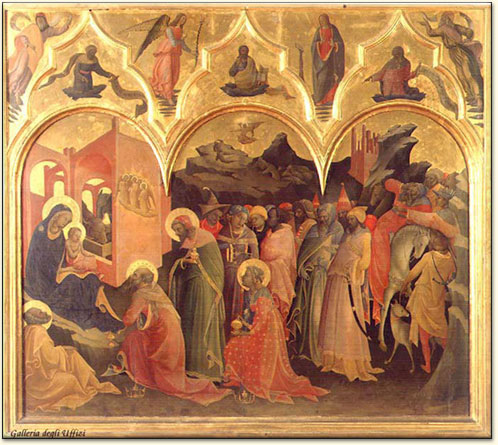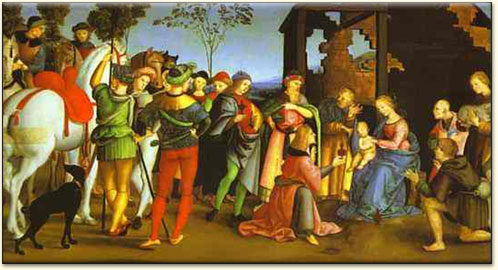From Egg Tempera to Oil
Prior to 1400, artists used paints made of pigments, egg, and water. These paintings often have a characteristic style, which seems somewhat “flat.”
Egg tempera

Adoration of the Magi, Lorenzo Monaco,
c. 1422. Tempera on wood, 115 x 177 cm.
Galleria degli Uffizi, Florence.
Around 1400, artists in Northern Europe begin to paint in a new way. They change to paints made of pigments and vegetable oil. This simple change from egg tempera to oil revolutionizes the art of painting. Artists can now paint with brighter colors, greater contrasts, and added depth. The new oil-based method of painting spreads throughout Europe. In Italy, it makes possible the paintings produced in the High Renaissance.
Oil

Adoration of the Magi (from the predella of the Coronation of the Virgin),
Raphael, 1503-1504.
Oil on panel, transferred to canvas
Vaticano, Pinacoteca Apostolica Vaticano, Rome, Italy
Compare the two styles of painting by examining the appearance of the paintings above.
Thoughts
Which painting is more interesting to you?
- What makes it interesting?
Which painting appears more realistic?
- How did the perspective of these paintings develop?
- Did the improvement in color encourage this development?
- What about the folds in the clothing?
- Are there any changes in the depiction of dark and light?
The two artists painted at the same time and yet the paintings differ in style.
- How did the artists do it?
Let’s explore the differences between the two paintings by examining how the artists used paint.